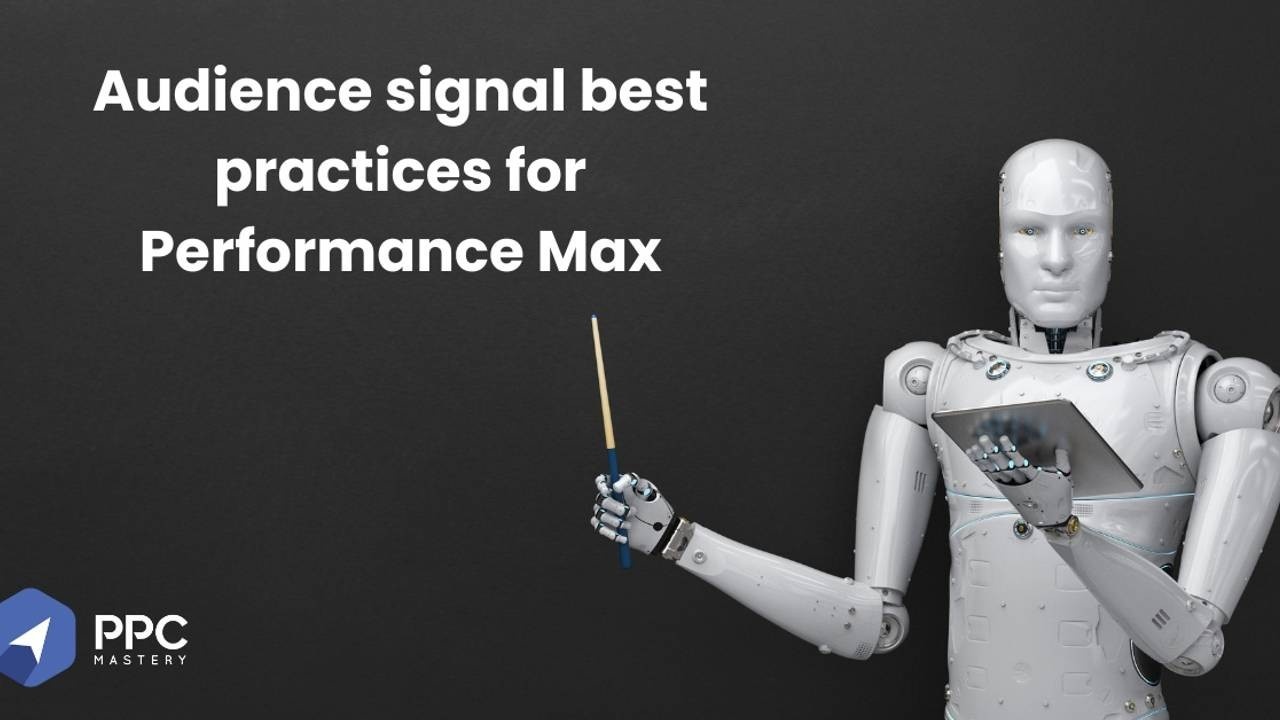
TPE #7: audience signal best practices for Performance Max
Sep 05, 2022Today, we’re sharing our audience signal best practices for Performance Max campaigns. There are a lot of misconceptions about how audience signals actually work and how to leverage them to drive the best performance.
In this issue, we’ll share our audience signal best practices that you can apply to improve the results of your own Performance Max campaigns.
Let’s dive right in!
Most people misunderstand audience signals
Before we get to our best practices, let’s briefly talk about what most people think audience signals are, versus what they really are.
What are audience signals?
Google introduced audience signals uniquely to Performance Max campaigns. It allows you to inform the algorithm about who your ideal target audience is. Contrary to popular belief, audience signals are not used for actual targeting. They are merely used as suggestions, to steer the algorithm in the right direction.
Google may or may not target the people in your audience signals. According to official documentation, “Performance Max may show ads to relevant audiences outside of your signals if they have a strong likelihood of converting to help you meet your performance goals”.
When setting up audience signals inside Google Ads, it says: “In Performance Max campaigns, your ads will be shown to people beyond your selections to find new conversions”.
Just remember this: audience signals are not used for direct targeting. Instead, they are used to kickstart your campaign by pushing your pMax campaign in the right direction.
Ultimately, Google will just try to target anyone, anywhere, to get the cheapest conversions possible.
Does this mean audience signals are not important?
Of course not! They are super important, especially when launching a new campaign.
Let’s move on to how we usually use audience signals for our clients.
Audience signal best practices
When setting up audience signals, these are the options to choose from:
- Your data (remarketing lists, customer lists etc.)
- Custom segments (based on their activity on Google property)
- Interests & detailed demographics (in-markets, affinities, life events etc.)
- Demographics (age, gender, parental status, household income)
The more signals you use, the wider your initial audience targeting. We recommend to start with very specific signals, such as first-party data signals (your own data).
For lead generation, these are some great first party data signals:
- Low-intent leads (micro conversions like newsletter subscribers, whitepaper downloads etc.)
- High-intent leads (macro conversions like contact form submissions, call conversions, quotation requests etc.)
- Low CLV clients
- High CLV clients
For ecom, these are some great examples:
- New customers
- Repeat customers (i.e. customers with a lot of orders)
- Low value customers (i.e ‘Bargain Hunters’, great for sale targeting)
- High value customers (i.e. ‘Big Spenders’ with high AOV)
Start with high value leads/customers. If you don’t have enough data points, you can use broader first party signals.
Mind you: these are just examples. You can go as granular with your first party data as you want. The more specific, the better in most cases. Just test and see what works well for you.
You could combine that data with a limited amount of (very) specific custom segments:
- People who searched for specific terms on Google (custom in-market)
- Your top 25-50 best performing search terms (custom in-market)
Now you’re combining your own data with Google’s data about people who are already actively looking for your products/services.
Interests and detailed demographics tend to go very broad. In most cases, we recommend not to target them individually.
Once you hit your targets and your performance is good, you can test broader audience signals to expand your targeting.
If your performance is NOT good, you might want to deleverage your audience signals by narrowing them down.
The problem with audience signals: it’s hard to see the actual impact per signal
It’s almost impossible to see the real impact of every individual audience signal because Google doesn’t provide any data for your signals. Even if you update your audience signals, and your performance improves, you can’t fully attribute it to those changes.
Always keep this in mind: audience signals are just mere suggestions for Google. It’s up to the algorithm to follow your signals or not. In most cases, Google will go beyond your audience signals and target anyone, anywhere in order to get the cheapest conversions possible.
The goal with your audience signals is to push your Performance Max campaign into the right direction. The best way to do this is to create signals that combine your own customer data with Google’s search data.
The TLDR recap
- Audience signals are NOT direct targeting
- Audience signals are suggestions to push pMax in the right direction
- Ultimately, Google WILL target people outside of your audience signals
- Start off with very specific signals (first party data + custom in-markets)
- Broaden if performance is good, narrow down if performance is bad
- You can’t see the performance for individual audience signals which makes it very hard to optimize
Don’t overcomplicate it. Just combine high value customer/lead data with high intent search term data and you’re well on your way to a well performing pMax campaign.
See you next week!
Bob & Miles


